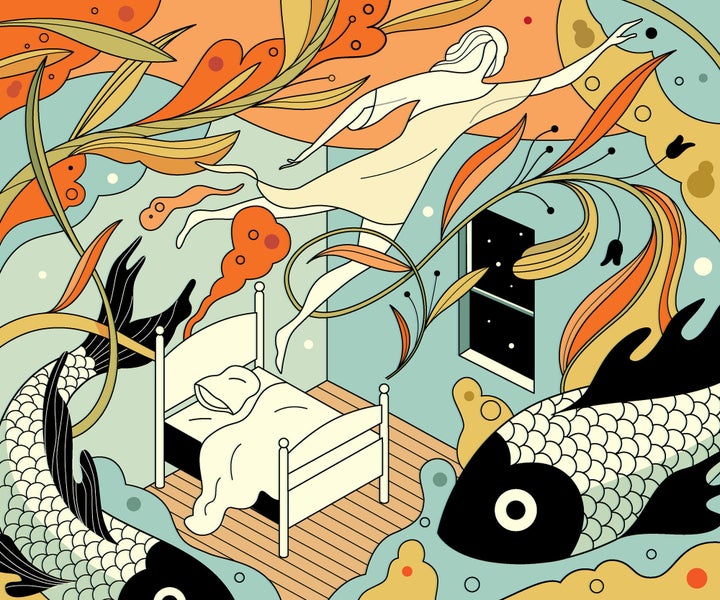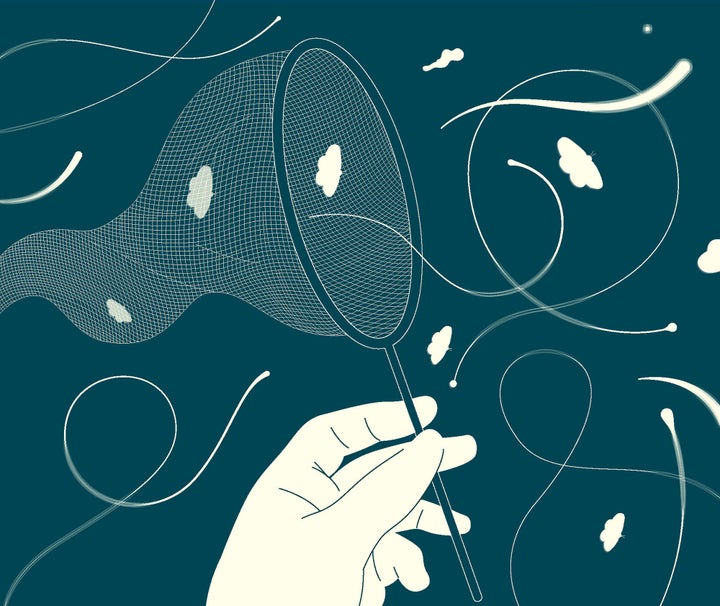
Humans have been obsessed with the obscurities of dreams for as long as we’ve been, well, human. Whether you religiously track your nighttime narratives in a bedside dream diary or wake most mornings without even recalling them, you’re probably a little curious about these hazy memories that fill the space between your sleeping and waking life.
The air of mystery surrounding dreams (What do they mean? What’s their function?) has led to as much scientific discovery as popular mythology. And what we think we know about dreams ― true or false ― just may be influencing our ability to score a sound night’s sleep. We’ve teamed up with Sleep Number to uncover the truth behind nine of the most common myths about dreams.
MYTH #1: “You dream every night, even if you don’t remember it.”
Science Says: Not necessarily
Researchers basically work with what we layfolk tell them about our dreams, rather than any biological or concrete proof of dreams’ existence, which makes it hard for sleep experts to perfect the science of when ― and how often ― we dream.
“There’s not one shred of evidence that dreaming enhances the reproduction of humans or the survival of the race,” says Mark Mahowald, a visiting professor at Stanford and neurology expert. “Dreams are kind of an innocent byproduct of sleep, which does have a function.”
That said, recent research using dream reports and brain imaging is helping to shed new light on how and why we dream. For example, a 2015 study from the University of California, Berkeley, suggests that dreams may help us process emotions.
MYTH #2: “People who remember their dreams are more creative than those who don’t.”
Science Says: Most likely
Although there’s no clinical evidence to prove this intriguing theory, some doctors do say a correlation between dreams and personal creativity exists. “Among my patients, creative people, whether writers or artists, often are more in touch with their dreams,” says psychiatrist and psychoanalyst Myron Glucksman, author of Dreaming: An Opportunity for Change. The reason? “During conscious waking life they are usually more aware of their inner life and their inner thoughts, and I think that transforms in terms of their sleeping life and their dream life,” Glucksman says.
MTYH #3: “You dream the most vividly in REM sleep.”
Science Says: That’s right
Our sleep cycles consist of alternating stages of light, deep and REM (or Rapid Eye Movement) sleep. This mix is key to waking up both physically rested and cognitively refreshed since newly learned information is processed and memories are locked during sleep.
Research suggests that longer and more vivid dreams do happen during REM, according to Lisa Medalie, a clinical psychologist and behavioral sleep medicine specialist at the University of Chicago. What’s more, it’s possible that people who are short on REM ― which can result from taking various medications, sleep disorders, and drug and alcohol abuse ― have fewer vivid dreams, which isn’t to be taken lightly.
MYTH #4: “Dreams are reflections of emotions and daily events.”
Science Says: Debatable
“That’s what people want to believe, but there’s not much evidence about that,” Mahowald says. Yet the issue seems open to interpretation; Shelby Harris, director of the behavioral sleep medicine program at the Sleep-Wake Disorders Center at Montefiore Medical Center, says dreaming helps us lock in our experiences and emotions of the day. “Many people, including myself, think of dreaming at night as a way for our brains to create files for what to remember and what to shred and discard,” she says.

MYTH #5: “Animals dream the same way we do.”
Science Says: Maybe
You’ve probably seen it ― a slumbering dog subtly twitching his legs. But is Fido really dreaming about chasing down the mail carrier? “We can only infer that,” says Rubin Naiman, a clinical assistant professor of medicine at the University of Arizona. Research seems to suggest that dogs, cats, rats, certain birds and whales dream, since they exhibit human-like stages of sleep like slow-wave and REM.
Further research by Matthew Wilson of the MIT Picower Institute for Learning and Memory has revealed similar brain activity in rats during their REM sleep and waking states ― which suggests that they replay daytime activity in their minds while they snooze.
MYTH #6: “Watching scary movies before bed will give you nightmares.”
Science Says: Possible, but not likely
Turns out Mom was being a little paranoid when she warned against watching horror flicks before bedtime. Though it has manifested in clinical settings, the phenomenon of “incorporation” ― when real-world stimuli end up influencing your dreams ― is inconsistent at best, Mahowald says. Blame this phenomenon, too, for outside influencers like your partner’s snoring or your pet’s midnight kisses for making its way into your dream.
MYTH #7: “Dreams control your body when you’re sleepwalking.”
Science Says: Not really
Sleepwalking happens during the deep stages of non-REM sleep, which is often (but not necessarily always) dreamless. This is when your body is pretty much on autopilot, and that’s why sleepwalkers tend to go about their typical business as if they were awake ― albeit more clumsily. They might head for the fridge or even go for a drive, Harris says.
However, a different problem does cause people to act out more acutely while dreaming. Most people’s muscles shut off during REM sleep ― a precautionary trick ― but with REM Behavior Disorder, those muscles stay in “on” mode. “We tend to see patients [affected by this disorder] in our sleep center who become quite violent in their sleep ― running, thrashing or hurting themselves or others, without intended malice,” Harris says.
MYTH #8: “Lucid dreaming is essentially being in control of your dreams.”
Science Says: Exactly
Lucid dreaming occurs in a twilight state between REM sleep and wakefulness, when you’re awake enough to perceive that you are dreaming. During a nightmare, for example, you might have the sudden sense of relief that this is indeed a bad dream, not reality.
“At that point, a lot of people can actually go back into the dream with impunity, like you’re in a movie theater,” Naiman says. Then, they can control the outcome of the dream, choose-your-own-adventure style. Lucid dreaming takes practice, but Naiman says he believes it can be cultivated by expanding your awareness “beyond the ordinary frame we place around things” during waking life.
MYTH #9: “Dreams that feel like they last for hours are really only a few minutes long.”
Science Says: ¯\_(ツ)_/¯
Researchers are still trying to figure this one out. Dreams generally happen in real time, according to Naiman; however, Wilson’s research offers more clues. One such study, co-authored with Albert K. Lee and published in the journal Neuron, showed that rats’ memories appear to replay in the brain at near-normal pace during REM sleep. But during non-REM sleep? As a peer pointed out, referring to the study, those memories can play out up to 100 times faster!
It’s also worth noting that what feels like one epically long dream could actually be made up of several different, shorter dreams. “One dream can transform into another,” Glucksman says.
And to those who are working to pin down the true nature of our dreams, we say, “Good luck.”
Sleep Number® is committed to helping dreamers get their best possible sleep. Sleep Number® beds adjust on each side to your ideal level of firmness, comfort and support ― your Sleep Number® setting.